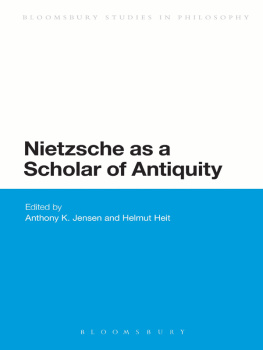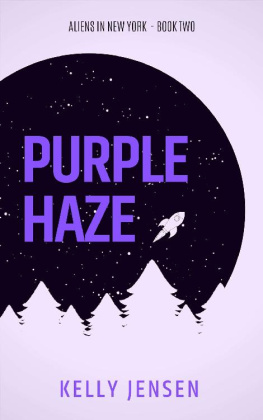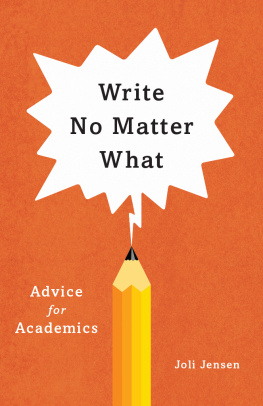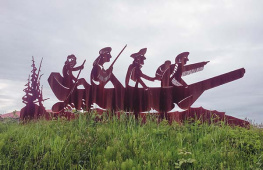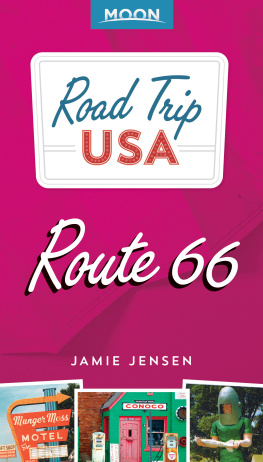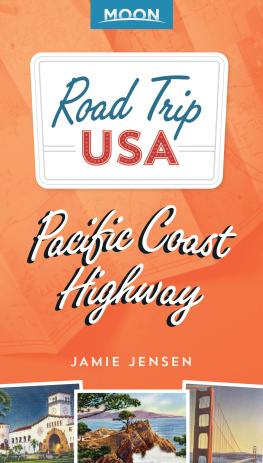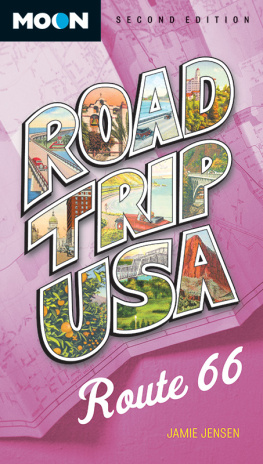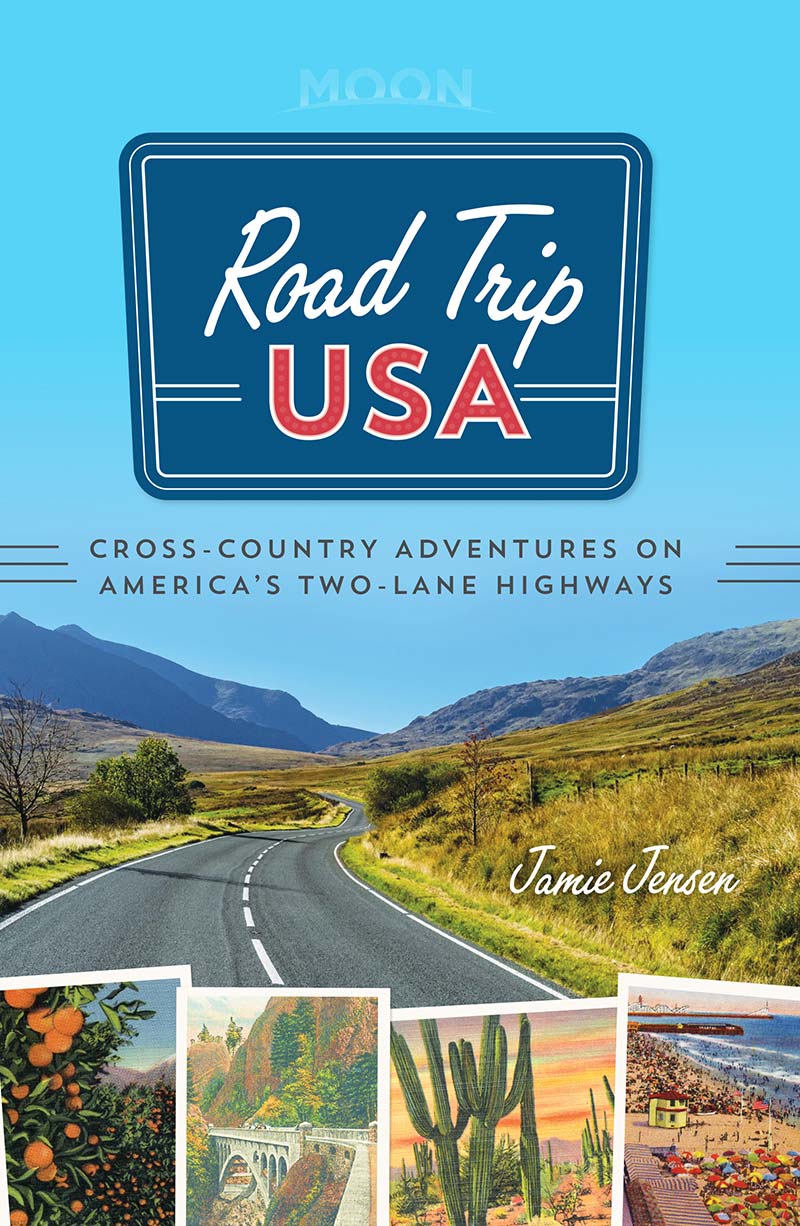Contents
Contents
Hit the Road!
The journeys in this book are as wild and varied as the landscapes they traverse. All celebrate the notion that freedom and discovery await us on the open road. American poets and artists from Walt Whitman to Muddy Waters have long sung the praises of rolling down the highway, and no matter how times have changed, we still believe theres nothing more essentially American than hitting the road and seeing the country.
America has always been a nation on the move. From colonial times onward, each generation pushed relentlessly westward until the outward frontier finally closed around the turn of the twentieth century. Taking advantage of the internal combustion engine, and inspired by the slogan See America First, Americans began to explore a new frontier, the system of highways that developed between the Atlantic and Pacific coasts. The first transcontinental route, the Lincoln Highway from New York to San Francisco, was completed in 1915, and motor courts, diners, and other new businesses soon sprang up along the roadside to serve the passing trade.
The half-century from the 1920s until the arrival of the interstate highway system was the golden age of American motor travel, and while we love shiny diners and neon signs as much as anyone, this book is not especially motivated by nostalgia. Almost all of the places described in Road Trip USAsoda fountains and town squares, mom n pop motels and minor league baseball teamsare happily thriving in the modern world, and better yet, they are close at hand. The simple act of avoiding the soulless interstates, with their soggy franchises and identikit chains, opens up a vast, and much friendlier, two-lane world. Youll chance upon monuments marking the actual sites of things you last heard about in high school history classes, or kitschy little souvenir stands flaunting giant dinosaurs outside their doors, and inside still selling the same postcards as they have for decades.
After traveling nearly 500,000 miles in search of the perfect stretches of two-lane blacktop, this is the book I wish Id had with me all along. So whether youre a biker, an RVer, a road warrior, or a Sunday driver, hop on board, turn the keyand hit the highway.
Attractions
Between Olympic National Park and San Diego, California
F or some reason, when people elsewhere in the country refer to the Pacific Coast, particularly California, its apparent that they think its a land of kooks and crazies, an overbuilt suburban desert supporting only shopping malls, freeways, and body-obsessed airheads. All this may be true in small pockets, but the amazing thing about the Pacific Coastfrom the dense green forests of western Washington to the gorgeous beaches of Southern Californiais that it is still mostly wild, open, and astoundingly beautiful country, where you can drive for miles and miles and have the scenery all to yourself.
Starting at the northwest tip of the United States at Olympic National Park, and remaining within sight of the ocean almost all the way south to the Mexican border, this 1,650-mile, mostly two-lane route takes in everything from temperate rainforest to near-desert. Most of the Pacific Coast is in the public domain, accessible, and protected from development within national, state, and local parks, which provide habitat for such rare creatures as mountain lions, condors, and gray whales.

Heading south, after the rough-and-tumble logging and fishing communities of Washington State, you cross the mouth of the Columbia River and follow the comparatively peaceful and quiet Oregon coastline, where recreation has by and large replaced industry, and where dozens of quaint and not-so-quaint communities line the ever-changing shoreline. At the midway point, you pass through the great redwood forests of Northern California, where the tallest and most majestic living things on earth line the Avenue of the Giants, home also to some of the best (meaning gloriously kitsch) remnants of the golden age of car-borne tourism: drive-through trees, drive-on trees, houses carved out of trees, and much more. The phenomenally beautiful coastline of Northern California is rivaled only by the incredible coast of Big Sur farther south, beyond which stretch the beachfronts of Southern California. The land of palm trees, beach boys, and surfer girls of popular lore really does exist, though only in the southernmost quarter of the state.
Along with the overwhelming scale of its natural beauty, the West Coast is remarkable for the abundance of well-preserved historic sitesmost of which havent been torn down, built on, or even built aroundthat stand as vivid evocations of life on what was once the most distant frontier of the New World. While rarely as old as places on the East Coast, or as impressive as those in Europe, West Coast sites are quite diverse and include the Spanish colonial missions of California, Russian and English fur-trading outposts, and the place where Lewis and Clark first sighted the Pacific after their long slog across the continent.

Last but certainly not least are the energizing citiesSeattle and Portland in the north, San Francisco in the middle, and Los Angeles and San Diego to the souththat serve as gateways to (or civilized respites from) the landscapes between them. Add to these the dozens of small and not-so-small towns along the coast, with alternating blue-collar ports and upscale vacation retreats, and you have a great range of food, drink, and accommodations options. Local cafs, seafood grills, and bijou restaurants abound, as do places to stayfrom youth hostels in old lighthouses to roadside motels (including the worlds first, which still stands in lovely San Luis Obispo, California) to homespun B&Bs in old farmhouses.
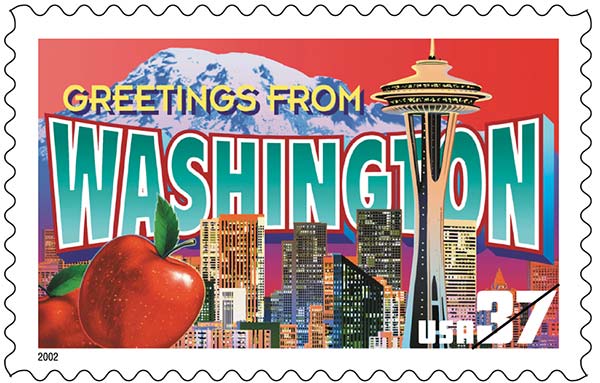
The coast of Washington is a virtual microcosm of the Pacific Northwest, containing everything from extensive wilderness areas to Native American fishing villages and heavily industrialized lumber towns. Starting at splendid Port Townsend, US-101 loops west around the rugged Olympic Peninsula, passing near the northwesternmost point of the continental United States while allowing access to the unforgettable natural attractionssandy, driftwood-strewn beaches; primeval old-growth forests; and pristine mountain lakes and glaciated alpine peaks, to name just a fewof


